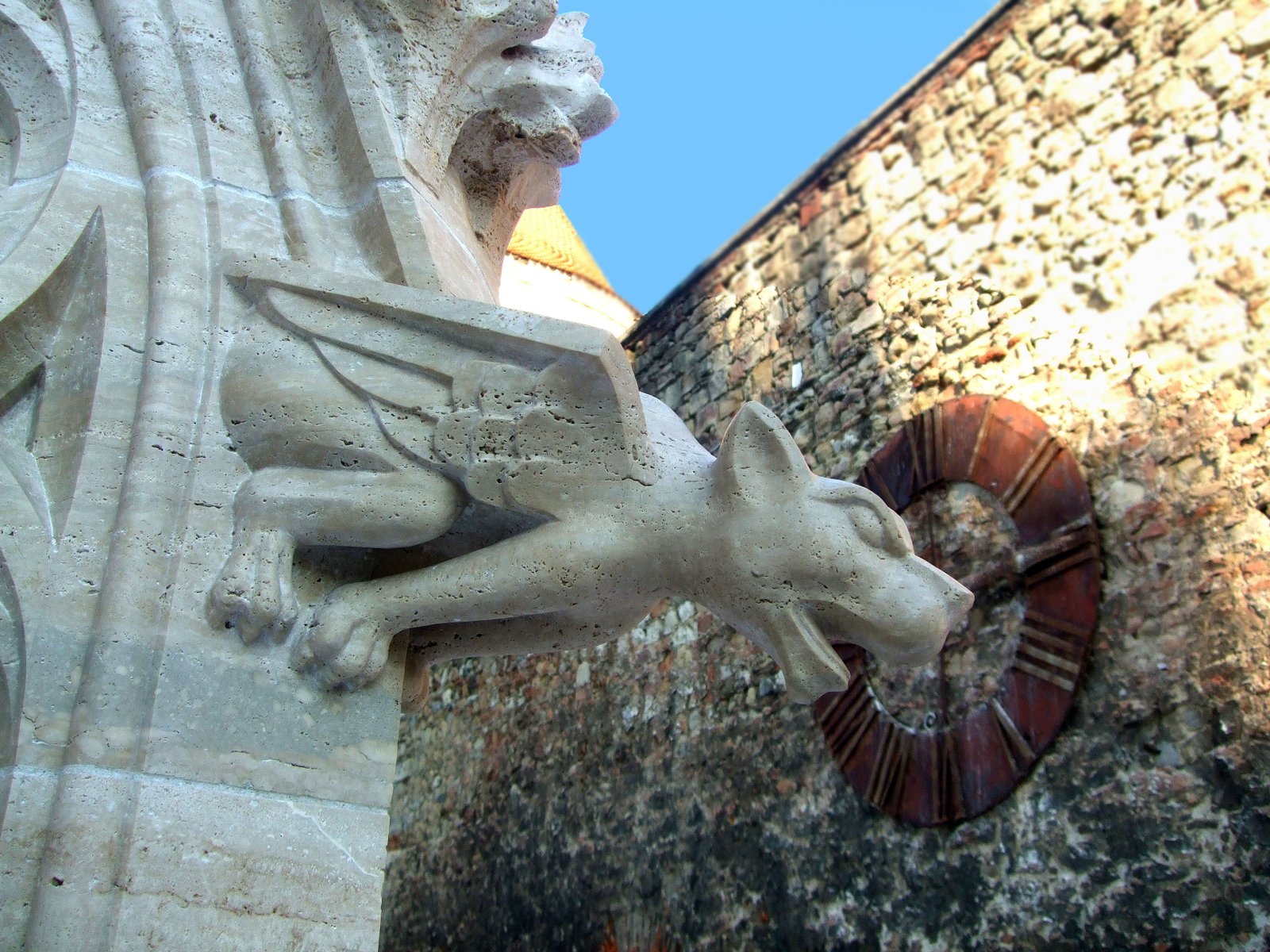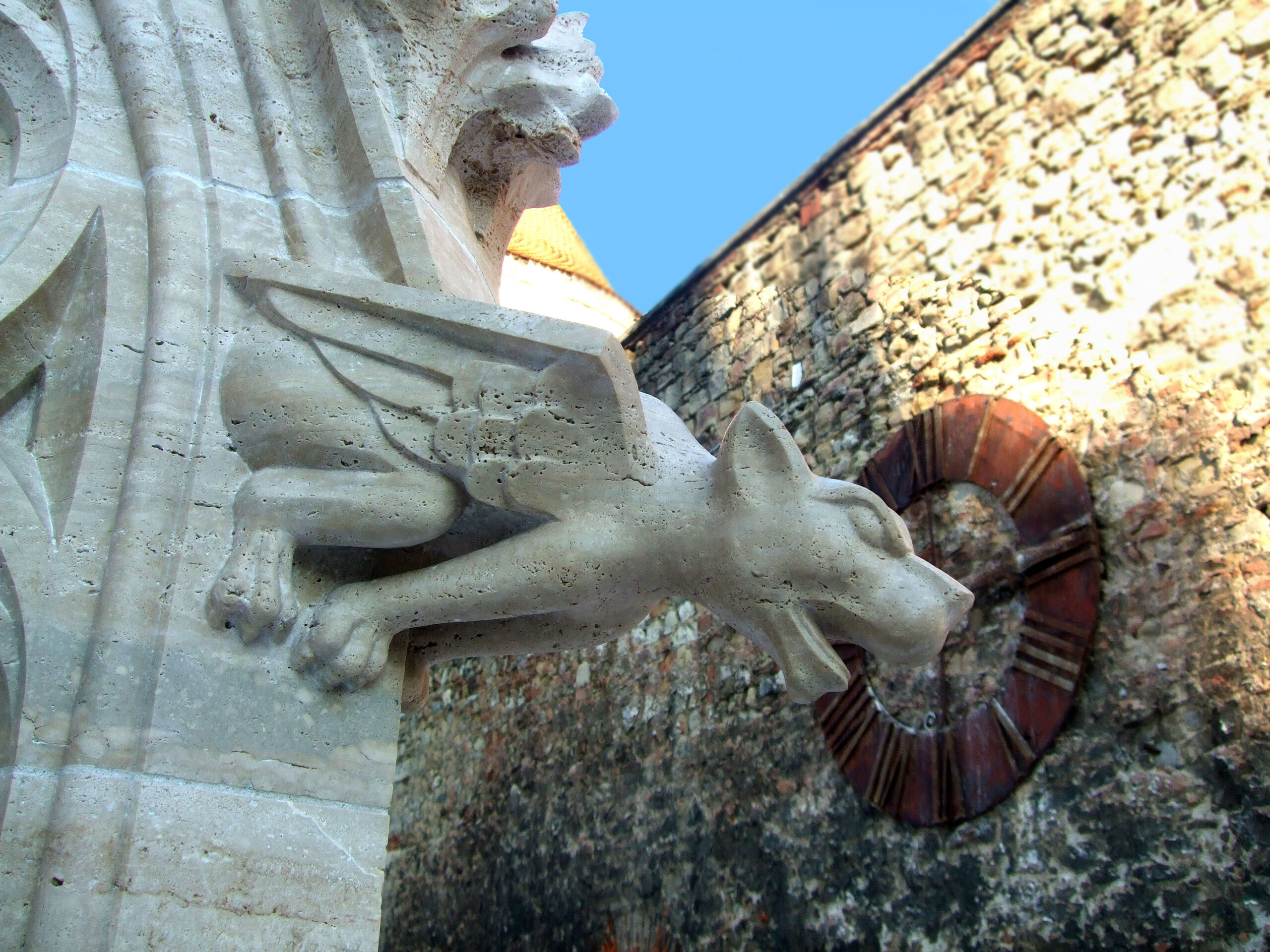Field Guide to Gargoyles, Part Five
Welcome to the fifth and final installment of the Field Guide to Gargoyles! By the end of this post, you’ll be well prepared to study any gargoyle you encounter in the wild!

What is their significance?
No one is really sure why medieval gargoyles exist or look the way they do. That mystery is a big part of what makes them so interesting. A bunch of different theories exist. There’s not enough evidence to back up any of them, but many are worth considering.
Obviously, many gargoyles and grotesques are ugly, deformed, and even crude. Since medieval Europeans believed that external defects were signs of internal ones, many people believe that grotesques represent demons or people who have sinned. Demons carved on churches definitely raise some questions, for which there are several possible answers.
- By placing gargoyles and grotesques on the church’s walls, evil forces are symbolically banished to the outside of a church so that they can’t get inside. They may even protect the church from evil. There’s a word for this protective quality – “apotropaic” – and it shows up in medieval art a lot.
- Some people have suggested that having demons or sinners working hard outside to guard the church shows how God conquers evil. If this sounds good to you, keep in mind that these figure sometimes appear inside the church.
- Medieval society was big on scaring people straight, especially through artwork. Showing terrifying demons and deformed sinners outside the church might have remind people how important it was to go inside and pray.
If you think that gargoyles and grotesques are too charming, humorous, or clever, to be so bad, here are a few other theories you may prefer instead.
- There’s some compelling evidence that a small amount of pagan (pre-Christian) symbolism was used in early Christian times for the sake of putting recent converts at ease. Grotesques may have come from this practice.
- In the Middle Ages, animals had their own symbolic characteristics. Frequently these connotations are not what we might expect today – many “cute” animals were once seen as bad – and it’s interesting to note that the most popular animals to appear as gargoyles and grotesques primarily had negative traits.
- Humanoid gargoyles and grotesques may have symbolic meanings, too. Some are obvious, coming from their appearances or mannerisms, while others relate to old morals or tales. They’re often comical or crude, but again, usually not positive.
- Some people don’t believe any of this, so they argue that gargoyles were fun for medieval stone carvers and don’t actually mean anything. Personally, I’m not buying this idea.
As you judge these theories for yourself, keep a few things in mind: Looking at photos of gargoyles can be deceiving. Medieval churches (particularly Gothic ones) are quite tall, so gargoyles are way the heck up there! They can be very difficult to see, which poses some problems for any theory involving interactions with passers-by. Also, grotesques don’t just live on churches. They appear on other buildings and even in other media like furniture and manuscripts, and their meanings are probably related to those similar cousins in other media. Medieval manuscripts are a much bigger area of study than are architectural grotesques, and scholars of the field have many of their own theories about what they may symbolize. Finally, people continue to make gargoyles and grotesques long after their original meanings have been lost. Who knows how many times their meanings have changed over time? There may be more than one right answer to this particular question.
Ever since the medieval revivals of the 19th century, gargoyles have taken on heaps of popular associations, especially involving fantasy, horror, and the occult. They appear regularly in books, movies, graphic novels, and television shows. Disney even made an animated television series called Gargoyles in the 1990s. All this means that gargoyles and grotesques continue to take on new meanings and associations beyond their medieval ones, and I think that’s actually pretty brilliant. However, it has led to loads of misinformation, superstition, and legends being perpetuated all over the internet.
I really hope everyone has enjoyed the Field Guide to Gargoyles. The series may be over, but my gargoyle posts will definitely continue. Gargoyles and grotesques are so much fun to study and look at. I would love to hear about all of your experiences with gargoyles, so send me your photos, questions, and observations please!
Read previous installments of the Field Guide to Gargoyles here!
Further Reading
- Benton, Janetta Rebold. The Medieval Menagerie: Animals in the Art of the Middle Ages. New York, London, Paris: Abbeville Press, 1992.
- Benton, Janetta Rebold. Holy Terrors: Gargoyles on Medieval Buildings. New York, London, Paris: Abbeville Press, 1997. This book provides a comprehensive overview of gargoyles – what we know about them and what we don’t. Benton presents all the prevailing interpretations of medieval gargoyles, along with the pros and cons of each one.
- Benton, Janetta Rebold. Medieval Mischief: Wit and Humor in the Art of the Middle Ages. London: Sutton Publishing, Limited, 2005.
- Camille, Michael. Image on the Edge: The Margins of Medieval Art. Chicago: University of Chicago Press, 2004. Especially chapter 3 – “In the Margins of the Cathedral”.
- Camille, Michael. The Gargoyles of Notre-Dame: Medievalism and the Monsters of Modernity. Chicago: University of Chicago Press, 2009.
- Gargoyle historian Dolores Herrera’s website.
- Trew Crist, Darlene. American Gargoyles: Spirits in Stone. New York: Clarkson Potter/Publishers, 2001. If you live in America and want to go gargoyle hunting, then this is the book for you. It includes gorgeous pictures, facts, anecdotes from interviews with stone carvers and gargoyle designers, and a list of sites to visit.
- Yenne, Bill. Gothic Gargoyles. New York: Barnes & Noble Books, 1998.


